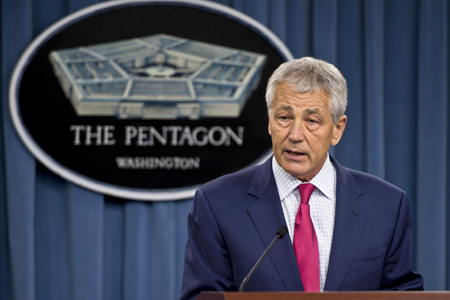The  United States intends to spend nearly $1 billion to deploy an additional 14 anti-missile interceptors in Alaska in the next four years in order to bolster the defense of the US homeland against a limited long-range ballistic missile attack from North Korea or Iran, announced Defense Secretary Chuck Hagel. This action comes amidst the North Korean regime’s recent bellicose statements, its success last December in orbiting a small satellite from a long-range rocket, and its recent nuclear test, Hagel told Pentagon reporters at a March 15 briefing. Under the plan, the Defense Department will install these ground-based interceptors at Fort Greely, Alaska, by the end of Fiscal 2017, bringing the total number of deployed GBIs to 44, when including those already in Alaska and California, he said. The United States will also station a second AN/TPY-2 X-band tracking radar in Japan, said Hagel. The Pentagon will also, per Congress’ mandate, conduct environmental impact studies of a potential additional GBI site in the United States, he said. Finally, the United States is abandoning the plan to deploy Standard Missile-3 IIB missiles in Europe as part of the European Phased Adaptive Approach ballistic missile defense architecture, in part to help pay for the additional GBIs, said Hagel. Protection of Europe will not suffer under this change, he asserted. (Hagel’s prepared remarks) (Hagel-Miller-Winnefeld transcript)
United States intends to spend nearly $1 billion to deploy an additional 14 anti-missile interceptors in Alaska in the next four years in order to bolster the defense of the US homeland against a limited long-range ballistic missile attack from North Korea or Iran, announced Defense Secretary Chuck Hagel. This action comes amidst the North Korean regime’s recent bellicose statements, its success last December in orbiting a small satellite from a long-range rocket, and its recent nuclear test, Hagel told Pentagon reporters at a March 15 briefing. Under the plan, the Defense Department will install these ground-based interceptors at Fort Greely, Alaska, by the end of Fiscal 2017, bringing the total number of deployed GBIs to 44, when including those already in Alaska and California, he said. The United States will also station a second AN/TPY-2 X-band tracking radar in Japan, said Hagel. The Pentagon will also, per Congress’ mandate, conduct environmental impact studies of a potential additional GBI site in the United States, he said. Finally, the United States is abandoning the plan to deploy Standard Missile-3 IIB missiles in Europe as part of the European Phased Adaptive Approach ballistic missile defense architecture, in part to help pay for the additional GBIs, said Hagel. Protection of Europe will not suffer under this change, he asserted. (Hagel’s prepared remarks) (Hagel-Miller-Winnefeld transcript)
The U.S. military is maintaining a beefed-up presence in the Middle East, including fighters and air defense assets, following the U.S. strikes on Iranian nuclear facilities June 22 and subsequent retaliation by the Iranians against Al Udeid Air Base in Qatar.
